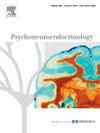What is the best sampling region for endocrine hair analysis? A comparison between the posterior vertex and occipital region and recommendation for standardization
IF 3.4
2区 医学
Q2 ENDOCRINOLOGY & METABOLISM
引用次数: 0
Abstract
Background
Hair analysis is increasingly used to index long-term cumulative hormone levels. However, it remains unclear from which scalp region hair should be sampled to yield best results. Here, we conduct an in-depth, systematic investigation into this question, comparing quality characteristics between the two most promising sampling areas, the posterior vertex and the occipital region. To advance standardization in future research, we specify anatomical landmarks to clearly define sampling regions.
Methods
Participants (N = 53) provided a total of twelve hair samples across two time points, three months apart. At each time point, six hair samples (three from each region) were analyzed for concentrations of cortisol, cortisone, progesterone, dehydroepiandrosterone and endocannabinoids (AEA, 1/2-AG, OEA, SEA, PEA) via liquid chromatography-tandem mass spectrometry. Patterns of intra-region variability, mean differences, test-retest correlations and associations with external criteria (anthropometrics and perceived stress) were compared between regions.
Results
Overall, no consistent differences were found between the posterior vertex and occipital region with regard to intra-region variability, test-retest correlations and external associations. However, significant mean differences in analyte concentrations were observed: hair cortisol and cortisone were higher in the occipital region, while OEA, SEA and PEA were higher at the posterior vertex.
Conclusions
Our findings highlight the importance of sampling from a defined scalp region for endocrine hair analyses. While neither scalp region was unequivocally superior, differences in mean concentrations call for increased standardization of methodological practice in future research. We propose anatomical landmarks for precise region localization and offer practical recommendations concerning the choice of sampling region.
内分泌毛发分析的最佳采样区域是什么?后顶点与枕区的比较及标准化建议
头发分析越来越多地用于测定长期累积激素水平。然而,目前尚不清楚应该从哪个头皮区域取样以获得最佳结果。在这里,我们对这个问题进行了深入、系统的研究,比较了两个最有希望的采样区域,后顶点和枕区之间的质量特征。为了在未来的研究中推进标准化,我们指定了解剖地标来明确定义采样区域。方法参与者(N = 53)在两个时间点(间隔3个月)共提供了12份头发样本。在每个时间点,通过液相色谱-串联质谱分析6个毛发样本(每个地区3个)的皮质醇、可的松、孕酮、脱氢表雄酮和内源性大麻素(AEA、1/2-AG、OEA、SEA、PEA)的浓度。区域内变异模式、平均差异、重测相关性以及与外部标准(人体测量学和感知压力)的关联在区域之间进行了比较。结果总的来说,后顶点和枕区在区域内变异性、重测相关性和外部关联方面没有一致的差异。然而,在分析物浓度上观察到显著的平均差异:毛发皮质醇和可的松在枕部较高,而OEA、SEA和PEA在后顶点较高。结论我们的研究结果强调了从特定的头皮区域取样对头发内分泌分析的重要性。虽然两个头皮区域都没有明确的优势,但平均浓度的差异要求在未来的研究中增加方法实践的标准化。我们提出了精确区域定位的解剖标志,并就采样区域的选择提供了实用的建议。
本文章由计算机程序翻译,如有差异,请以英文原文为准。
求助全文
约1分钟内获得全文
求助全文
来源期刊

Psychoneuroendocrinology
医学-精神病学
CiteScore
7.40
自引率
8.10%
发文量
268
审稿时长
66 days
期刊介绍:
Psychoneuroendocrinology publishes papers dealing with the interrelated disciplines of psychology, neurobiology, endocrinology, immunology, neurology, and psychiatry, with an emphasis on multidisciplinary studies aiming at integrating these disciplines in terms of either basic research or clinical implications. One of the main goals is to understand how a variety of psychobiological factors interact in the expression of the stress response as it relates to the development and/or maintenance of neuropsychiatric illnesses.
 求助内容:
求助内容: 应助结果提醒方式:
应助结果提醒方式:


